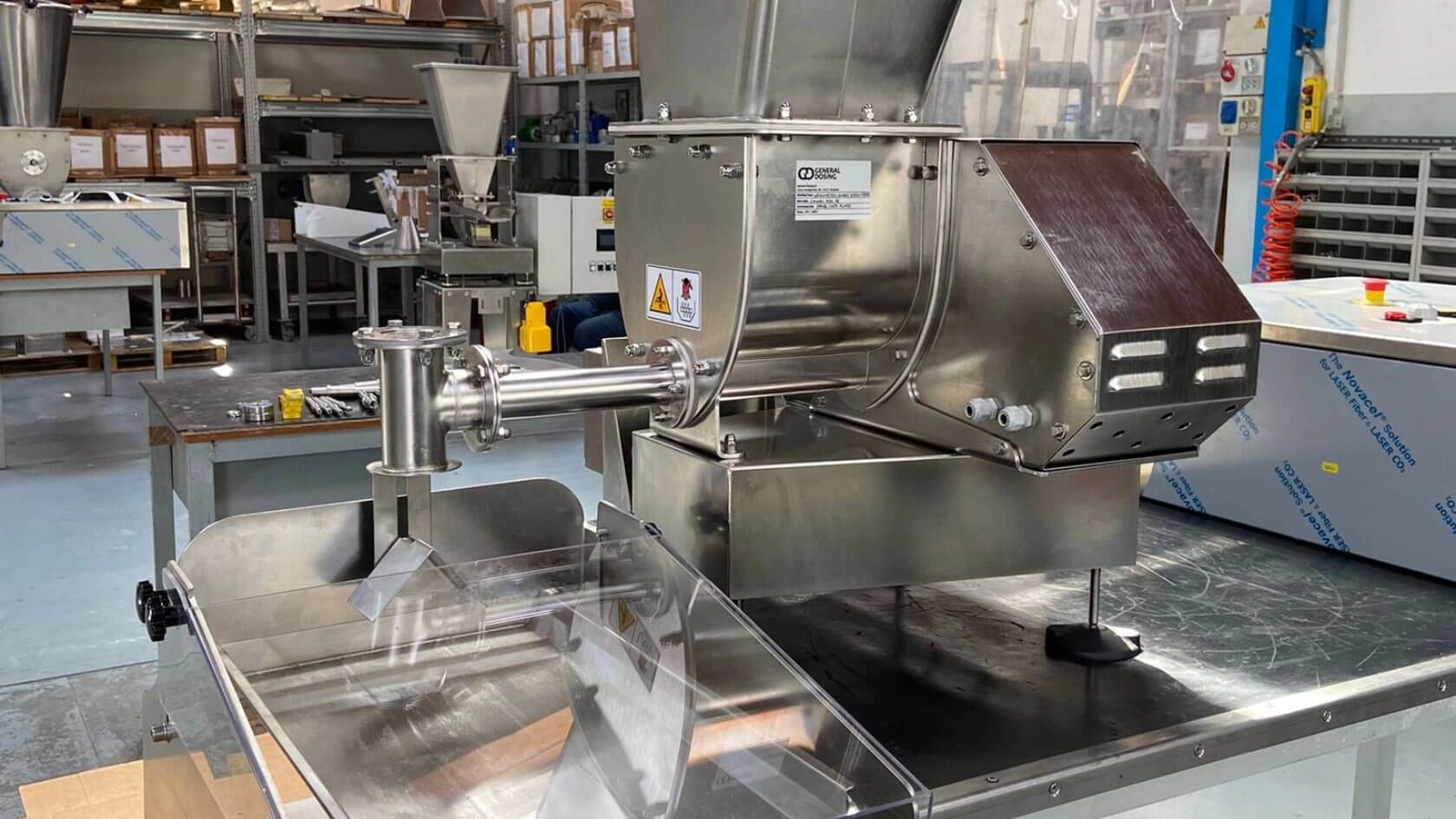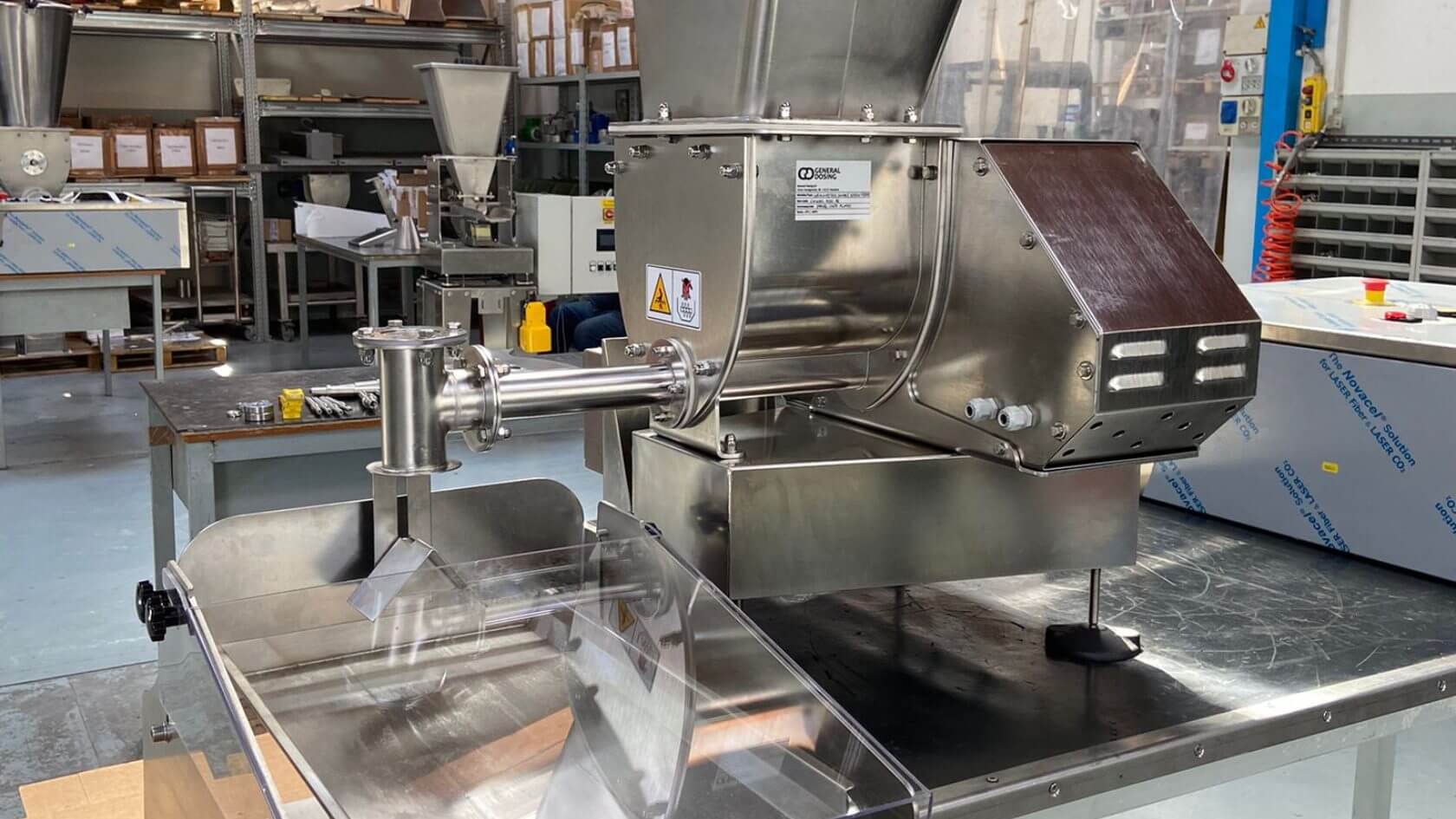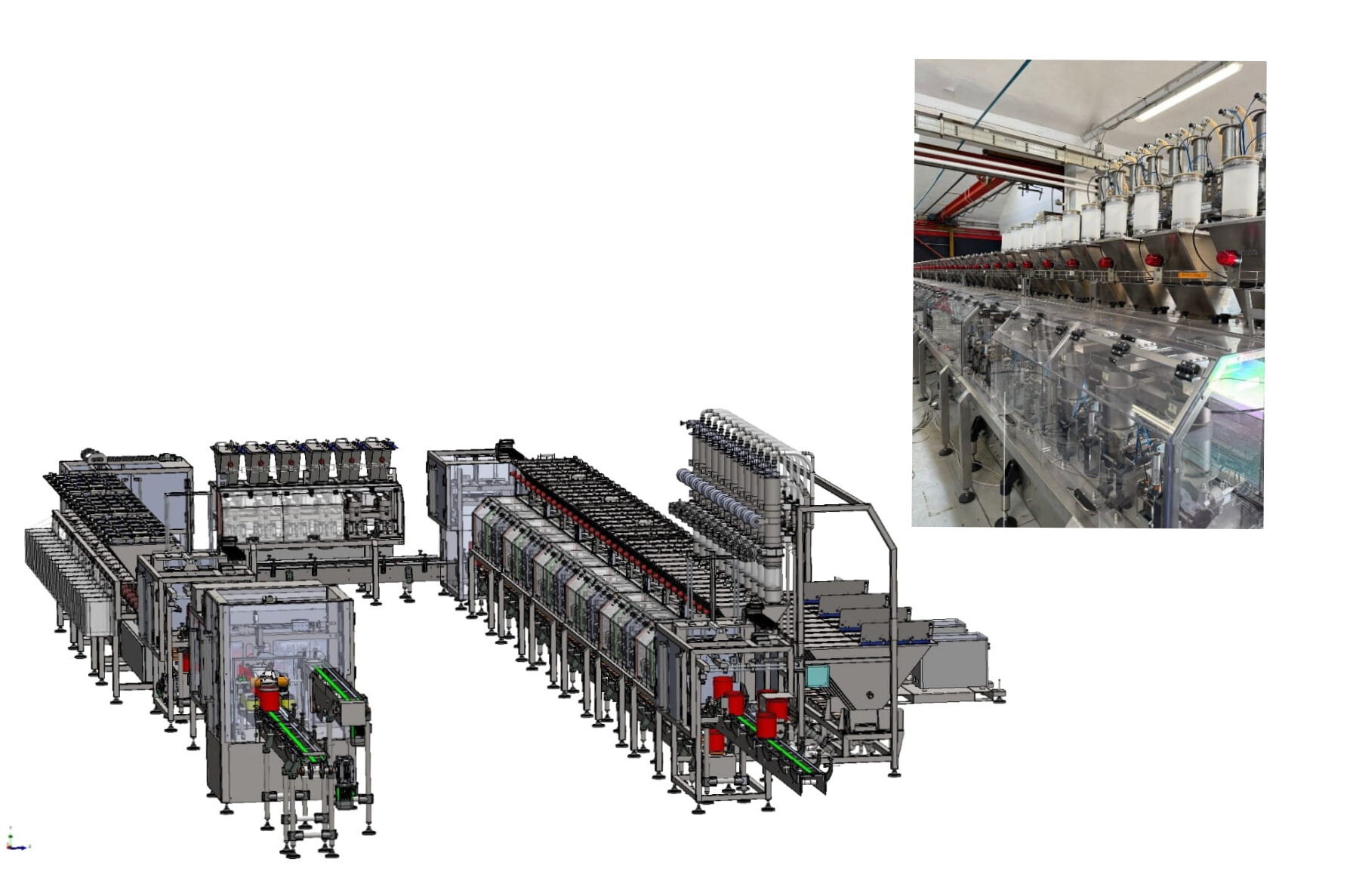In industrial food production lines, precision and reliability are essential requirements.
This article analyzes a technical solution developed for the controlled application of salt on stretched curd cheese, leveraging an integrated system composed of a screw feeder and a vibrating channel.
A tailor-made project designed to address the typical challenges of the product and ensure consistent quality in every batch.
The challenge of salt dosing on stretched curd cheese: hygroscopicity, line variability, and the need for uniformity
Salt, despite being a common ingredient, represents one of the most complex raw materials to dose accurately on an industrial scale.
In this project, developed for a stretched curd cheese production line, the challenges to face were numerous and required targeted engineering solutions.
The first challenge was linked to the very nature of salt: a hygroscopic product, meaning it quickly absorbs moisture from the surrounding environment.
This phenomenon tends to promote the formation of clumps and internal bridges within storage and transport containers, with the consequent risk of blockages and irregular dosing.
In high-intensity production environments, such interruptions can lead to plant downtime, raw material waste, loss of compliance, and cycle slowdowns.
Further complicating the issue was the need to cover a variable surface – from 200 mm to 350 mm – uniformly.
Stretched curd cheese has very particular physical and behavioral characteristics: it tends to deform, appears in uneven strips, and has variable viscosity depending on temperature and residence time on the line.
This makes it essential not only to have precise dosing in quantitative terms (from 10 to 60 Kg/h) but also a system capable of adapting to the line dynamics.
Finally, it was essential to ensure total homogeneity in the seasoning distribution.
Uneven seasoning compromises the perceived quality by the consumer and can alter the properties of the finished product, especially in dairy-based products, where the balance of ingredients directly affects shelf life and final aroma.
Faced with these requirements, a simple mechanical system was not enough.
A tailor-made solution was needed, capable of synergistically addressing the three challenges: the hygroscopic nature of salt, the dimensional variability of the line, and the need for homogeneous distribution.
The answer was the integration of a screw feeder with a bridge breaker and a vibrating channel optimized for the line width.
The screw feeder with bridge breaker: the beating heart of the feeding system
At the base of the designed system is a screw feeder sized to guarantee a variable flow rate between 10 and 60 Kg/h, with millimetric precision.
The choice to use a screw as a dosing element is no coincidence: this system is particularly suitable for handling powders and granules of homogeneous size, ensuring a continuous and adjustable flow.
The screw diameter was defined during the design phase to guarantee the right compromise between transport capacity and structural compactness.
However, the distinctive feature of this feeder is the integrated horizontal bridge breaker: a mechanical system designed to break up clumps formed during storage.
The bridge breaker works in sync with the screw, preventing salt compaction and ensuring continuous, interruption-free feeding.
The operation is simple yet effective: while the screw rotates to transport the product, the bridge breaker – positioned transversely – also rotates, agitating the salt and breaking the bridges that tend to block the flow.
This action prevents both blockages and unevenness, two of the main causes of inefficiency in traditional dosing systems.
An additional advantage of the screw feeder with bridge breaker system is the possibility to integrate feedback sensors and closed-loop control systems.
In this case, the feeder was set up to work in semi-automatic mode but with the possibility of being upgraded towards Industry 4.0 standards.
The added value thus translates into scalability and adaptability to future plant evolutions.
Another important aspect concerns maintenance and cleaning: the system was designed modularly, with a removable screw and surfaces treated to resist salt corrosion.
This allows quick sanitation operations, fundamental in the food sector where hygiene regulations are particularly strict.
The vibrating channel: distribution uniformity and mechatronic synergy with the production line
If the screw feeder represents the heart of the system, the vibrating channel is the arm that distributes the product with surgical precision.
One of the main problems in traditional dosing systems is adapting the discharge point (typically circular) to a wide and dynamic product line.
In this case, the transition from the feeder’s discharge diameter to the variable line width (200–350 mm) required the insertion of a vibrating channel calibrated according to the dimensional specifications of the stretched curd cheese.
The operating principle is controlled vibration: the product exiting the screw falls into the vibrating channel, which distributes it evenly across the entire width of the line, using a “cascading” mode.
This effect, besides improving visual uniformity, ensures a homogeneous distribution of salt on the product, with no accumulations or uncovered areas.
The vibrating system is adjustable in frequency and amplitude, allowing the distribution speed to be adapted based on product characteristics and line speed.
In particular, fine control of the vibrating motion ensures that the salt is “spread” correctly, following the geometry of the stretched curd cheese and accompanying its flow.
Mechatronics plays a fundamental role here: the vibrating channel is not a passive element but an integral part of a coordinated system.
Centralized control allows synchronization of dosing and vibration, minimizing tolerances and ensuring a regular salt flow. Looking ahead, this approach enables implementation of predictive logics and self-calibration, increasing overall line efficiency.
Also here, the design was conceived for the food industry: food-grade materials, easy disassembly for cleaning, absence of dead zones, and possibility of in-line washing.
The finished product’s safety is safeguarded at every stage, and regulatory compliance is guaranteed by component certifications and traceability of the entire production process.
The final result is a system capable of delivering real added value: it increases the quality of the finished product, reduces waste, minimizes manual interventions, and perfectly integrates into the continuous production logic.
A concrete answer to the precision, hygiene, and reliability needs of modern food industry.




